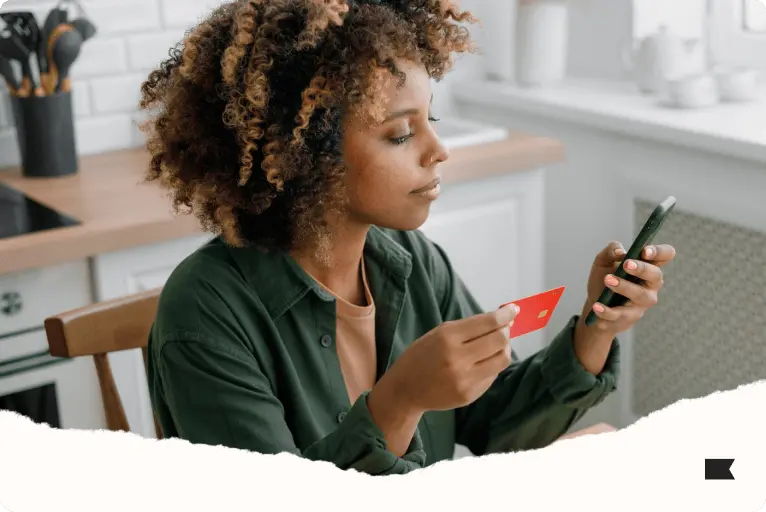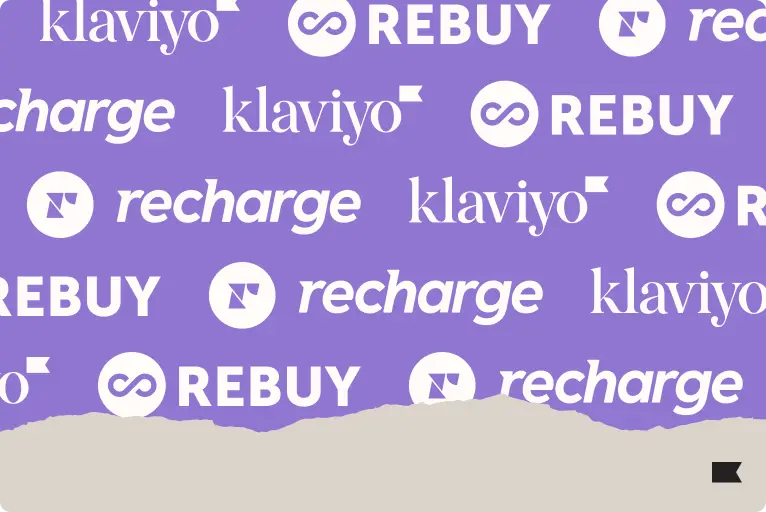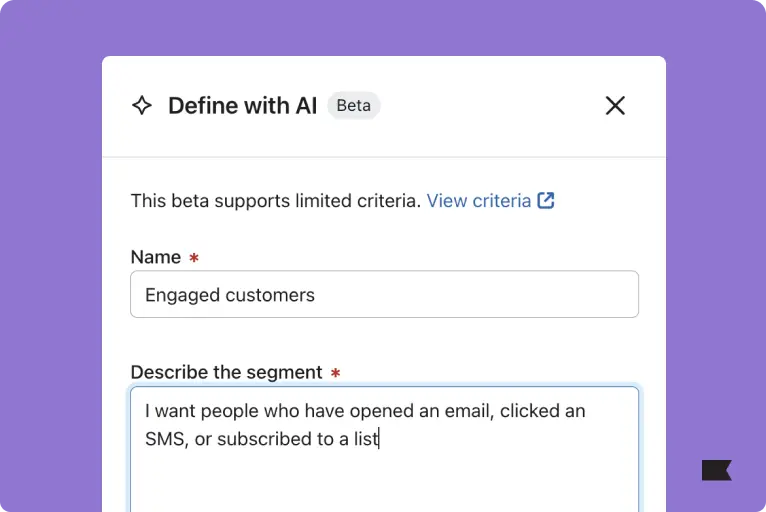Crack the growth code: omnichannel planning for 2024

In today’s hyper-connected world, businesses are constantly seeking new ways to engage their audience across multiple marketing channels.
One effective strategy gaining traction is omnichannel marketing.
Omnichannel marketing is more than just a buzzword—it’s a strategic approach that integrates various channels to provide customers with a seamless, cohesive brand experience. It ensures that regardless of the channel or device customers use, they receive consistent messaging and personalized interactions.
And that’s essential at a time when consumers aren’t taking linear paths to your website or store. They’re on social media, reading email, talking to friends, and walking by and through stores. If your messages aren’t consistent and omnipresent, you’ll miss the opportunity to attract new customers and bring back existing ones.
Thinking about the full customer experience and journey can also help you reduce paid media spend as you increase your efforts in owned channels like SEO, email, SMS, and push notifications.
Here, we’ll discuss how to approach each of your owned marketing channels through an omnichannel lens—and offer a few proven tactics and techniques for coordinating across channels, too.
Email marketing in an omnichannel world: 5 ways to get started
Because it’s a versatile, and ubiquitous, channel for delivering personalized content, promotions, and updates—not to mention driving significant ROI—email is often the anchor of a strong omnichannel marketing strategy.
When planning big launches, sales, or news, email should be at the top of your list.
Here are 5 concrete steps you can take to start integrating email into your omnichannel marketing strategy today:
- Make sure you’re using sign-up forms to collect zero- and first-party data when visitors come to your site.
- Set up a send cadence—weekly, a few times a week, daily. Keep in mind that you need content to support your email cadence.
- Set up and start sending key email marketing automations, like abandoned cart emails, a welcome series, and post-purchase emails.
- As your list grows, consider how you might segment your audience to create more personalized experiences. (If you have a robust paid media strategy, you may already be using platforms like Meta and Google to advertise to specific groups of people, such as women who like plants and live in California.)
- Test and optimize your program through A/B testing. What works today may not work tomorrow. Craft a plan to keep your ROI and engagement high.
Pro tip: Stay consistent in your send cadence week to week and month to month. Subscribers have expectations, and big changes in frequency or cadence can lead to disengagement or distrust.
Test what works best for your subscribers—it probably won’t be one size fits all. This is where segmentation comes in: Those who are more engaged might want more email, while those who are less engaged might want less.
SMS marketing in an omnichannel world: 4 ways to get started
Over 30% of all ecommerce businesses and over half of businesses that make $20M+ in annual revenue are already using SMS for marketing, according to Klaviyo’s recent marketing mix report.
And it’s no wonder: SMS offers a direct and immediate way to reach customers, with click rates 5-10x higher than email. Consumers are increasingly comfortable receiving marketing communications via SMS, making it an invaluable channel for connecting with your audience.
SMS offers immediacy and direct communication, making it ideal for time-sensitive offers, news, and notifications.
Here are 4 strategies for using SMS to drive omnichannel subscribers:
- Use SMS as a loyalty channel. According to Klaviyo’s SMS consumer sentiment report, most consumers only subscribe to 2-3 brands via SMS—which means these are probably some of your most loyal customers. Consider rewarding them by sharing SMS-exclusive offers, early access to sales, or special content.
- Drive SMS sign-ups among your existing email subscribers. Let your email subscribers know that SMS subscribers get early access to the next sale or drop. Building your list of subscribers who’ve opted in to both email and SMS is a smart way to drive engagement, loyalty, and sales.
- Drive SMS sign-ups via your mobile app. If you have a mobile app, use push notifications to encourage app users to sign up for SMS marketing. Make sure to explain why they should subscribe to your SMS program in addition to using your app.
- Important note: Unlike email and SMS, where opt-in consent is tracked and visible directly in your marketing platform, push notification opt-out is much harder to determine because users can opt out at an operating system level.
- Establish a regular sending cadence. According to Klaviyo’s consumer sentiment report, 96% of consumers say weekly or more is the right frequency for SMS.
Haven’t started an SMS program? Now is the time
Getting started with an SMS program is easier than you might think. Begin by collecting opt-ins from your email and push subscribers and ensuring compliance with regulations such as TCPA.
Then, develop a strategy for your SMS campaigns, focusing on delivering valuable content and promotions to your audience. This strategy should include a mix of automations and campaigns to satisfy the expectations you set in the sign-up process.
Keep in mind that SMS programs have higher opt-out rates when compared to email (1% vs. 0.2%). Consider the following strategies to keep SMS subscribers engaged and continue growing your SMS list:
- Sales and promotions: Make sure your SMS subscribers are the first to know about any sales. Try giving them early access.
- Informational: Keep SMS subscribers informed about upcoming events or new content.
- Engagement: Send your SMS subscribers surveys and polls, or experiment with other messaging that encourages a response (e.g., “Do you like hot or cold coffee best?”)
- A/B test: Test to figure out when and how often you should send your messages—in the morning? In the evening? Daily? A few times a week?.
Pro tip: Don’t always ask your subscribers to buy something. They know you sell products and have likely bought some, but they don’t always need something from you. Deepen the conversation by incorporating messaging that doesn’t revolve around sales and transactions.
Push notification marketing in an omnichannel world: 2 ways to get started
Push notifications, available through mobile apps, provide another touchpoint for engaging with customers and driving action.
A single push notification in the first week after app installation can boost app retention by 71% after 2 months—and push notifications can increase overall retention rates 3-10x.
Customers who download your app on their phone have a strong interest in connecting with your brand. They’re probably among your best customers. But just like emails, push notifications can get lost in the endless number of notifications most people receive on their phones in a day.
To stand out, your notifications need to engage your customers in a special way. If you have an app, try the following:
- Work to gain push opt-ins by offering push subscribers early access to app updates and features.
- Make push notifications contextual by relating them to the customer’s unique position in your brand’s lifecycle.
- For example, make an offer to customers when they’re close to your store, or encourage them to visit the app for information about their shipment progress, loyalty status, or reservation.
Pro tip: Mobile push is not a channel where you should always be selling. Think about how you can drive push subscribers to your app to browse, try new features, or explore existing features.
3 ways to maximize omnichannel reach and engagement
Coordinating your campaigns across paid media, social media, website, email, SMS, and mobile push is key to maximizing their effectiveness.
Here are a few ways to improve omnichannel reach and engagement:
1. Focus on the unique strengths of each channel
Use email for more detailed, long-form content and follow-up communications, and SMS for quick updates, reminders, and urgent promotions.
Push notifications, meanwhile, are great for driving app usage and engagement. If you have special app features, use push notifications to drive users back to the app.
Keep in mind that your website is best for providing product details, sales information, and more. Don’t try to pack all the information into your outbound communications. Your main goal is driving subscribers and customers to your website or app.
2. Be consistent across channels
Make sure your branding and messaging is consistent across channels. For example, let��’s say you’re promoting a 20% off sale across several channels: email, SMS, and mobile push. Here’s what that might look like with a consistent omnichannel marketing strategy:
- Email: promote the sale and include personalized product recommendations
- SMS: focus on the discount and a single personalized product
- Push: mention the sale and tout in-app shopping features, such as a virtual fitting room
All of these touchpoints focus on the same sale, but lean in to the unique features of each channel to drive customer behavior.
3. Consider frequency and cadence across channels
Let’s stick with the example of the 20% off sale. How often should your brand get in front of consumers to drive them to your site?
In paid media, this could be many times across many different mediums—social ads, display ads, out-of-home ads, and direct mail. In email, SMS, and push, your normal send frequency should give you a starting point.
If you send daily, this sale may or may not warrant more sends. If you send less frequently, you may need to increase your cadence to drive results for the 20% off sale.
A lot of senders find success in sending twice on the last day of a sale: once in the morning and once in the evening. We also suggest sending based on time zone to give customers the best opportunity to participate in the sale.
4. Set up key automations, or flows
All senders should set several key automations, or flows, live to enhance their omnichannel marketing efforts. The following can be setup in Klaviyo across all these channels email, SMS, and/or push:
- Welcome series for new subscribers
- Cart abandonment automations
- Post-purchase follow-ups
- Re-engagement or win-back automations for inactive subscribers
By automating these flows, you can deliver timely and relevant messages to your audience at every stage of their journey.
Pro tip: Test hold-out groups from paid media for those who have subscribed to email and SMS. Many of your most loyal customers do not require paid efforts to stay engaged. By using an RFM analysis, you can automate the flow into and out of your paid media efforts to ensure the best return on ad spend (ROAS) possible.
Omnichannel marketing: 5 steps to take today
- Evaluate your current marketing channels and identify opportunities for integration, alignment, and/or suppression.
- Develop a strategy for coordinating consistent messaging and experiences across all channels, especially email, SMS, and push notifications.
- Start collecting opt-ins for email and SMS in all the places your customers are (online, in-app, in-store, through partners), and explore ways to incorporate all of those channels into all of your marketing campaigns.
- Enhance your omnichannel marketing efforts by implementing key automations, such as welcome series and cart abandonment emails, in addition to campaigns like weekly newsletters, deal announcements, and more.
- Continually optimize your omnichannel marketing strategy and drive results by staying informed about industry trends and best practices through this blog and other Klaviyo resources.
Omnichannel marketing FAQs
What is omnichannel marketing?
Omnichannel marketing refers to marketing across several different channels, including email, SMS, push notifications, social media, direct mail, and in-person.
How can a brand get started with omnichannel marketing?
Begin by evaluating your current marketing opportunities and take note of opportunities for integration and alignment. Then, develop a strategy for coordinating messages and experiences across channels, including implementing high-return automations and regular campaigns.
What are some ways to maximize an omnichannel marketing strategy?
Focus on the unique strengths of each channel, be consistent across channels, consider frequency and cadence, and set up automations.

Related content

Discover 4 proven ways to reduce cart abandonment and recover lost sales. Learn how to build trust, streamline check-out, and personalize abandoned cart flows to convert more shoppers.

Looking for the best Shopify apps for marketing and customer service? Klaviyo, Rebuy, and Recharge together create a high-performing tech stack that revenue and customer retention.

Learn 6 ways brands use AI in marketing automation to target audiences, create content, personalize, predict churn, benchmark, and manage reviews.